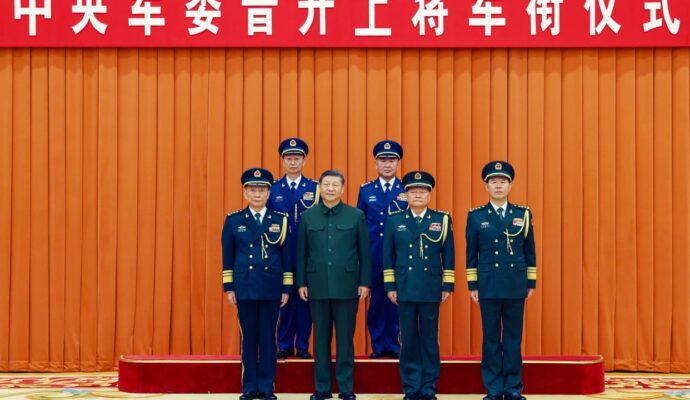
A trade truce between the US and China was set to expire on Tuesday, threatening an escalation of economic tensions between the world’s two largest economies.
Chinese officials said they hoped the United States would strive for “positive” trade outcomes on Monday, as the 90-day detente reached between the two countries last month was due to expire.
“We hope that the US will work with China to follow the important consensus reached during the phone call between the two heads of state … and strive for positive outcomes on the basis of equality, respect and mutual benefit,” a foreign ministry spokesman, Lin Jian, said in a statement.
Chinese and US officials said they expected the pause to be extended after the most recent round of trade talks held last month in Stockholm. Scott Bessent, the US treasury secretary, said last week the US had “the makings” of a trade deal with China and that he was optimistic about a path forward.
But Trump has yet to confirm any extension to the pause. “Tariffs are making our Country Strong and Rich!!!” he wrote on social media on Monday morning.
Failure to reach a deal would have major consequences. Trump had threatened tariffs on China as high as 245% with China threatening retaliatory tariffs of 125%, setting off a trade war between the world’s largest economies.
On Sunday, Trump posted on TruthSocial that China should quadruple its purchases of soybeans from the US to help reduce the trade deficit between the US and China.
Currently, US exports to China are subject to tariffs of about 30%, with imports from China subject to a baseline tariff of 10% and a 20% extra tariff in response to fentanyl smuggling allegations against China. Some products are taxed at higher rates. US exports to China are subject to tariffs of about 30%
The Federal Reserve and many economists have argued that the tariffs will push up prices in the US. Goldman Sachs strategists calculate that US consumers have absorbed 22% of tariff costs through June 2025. That share is expected to rise to 67% if recent tariffs follow the same pattern as earlier ones.
Ahead of the tariff deadline, chipmakers Nvidia and AMD agreed to pay the US government 15% of their revenue from advanced chips sold to China in exchange for export licenses to the market.
Stephen Olson, a former US trade negotiator, told Bloomberg of the deal: “What we are seeing is in effect the monetization of US trade policy in which US companies must pay the US government for permission to export. If that’s the case, we’ve entered into a new and dangerous world.”
Associated Press contributed to this story

